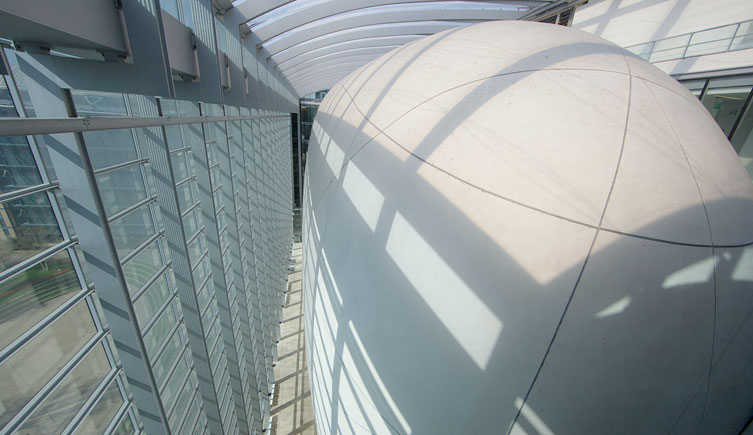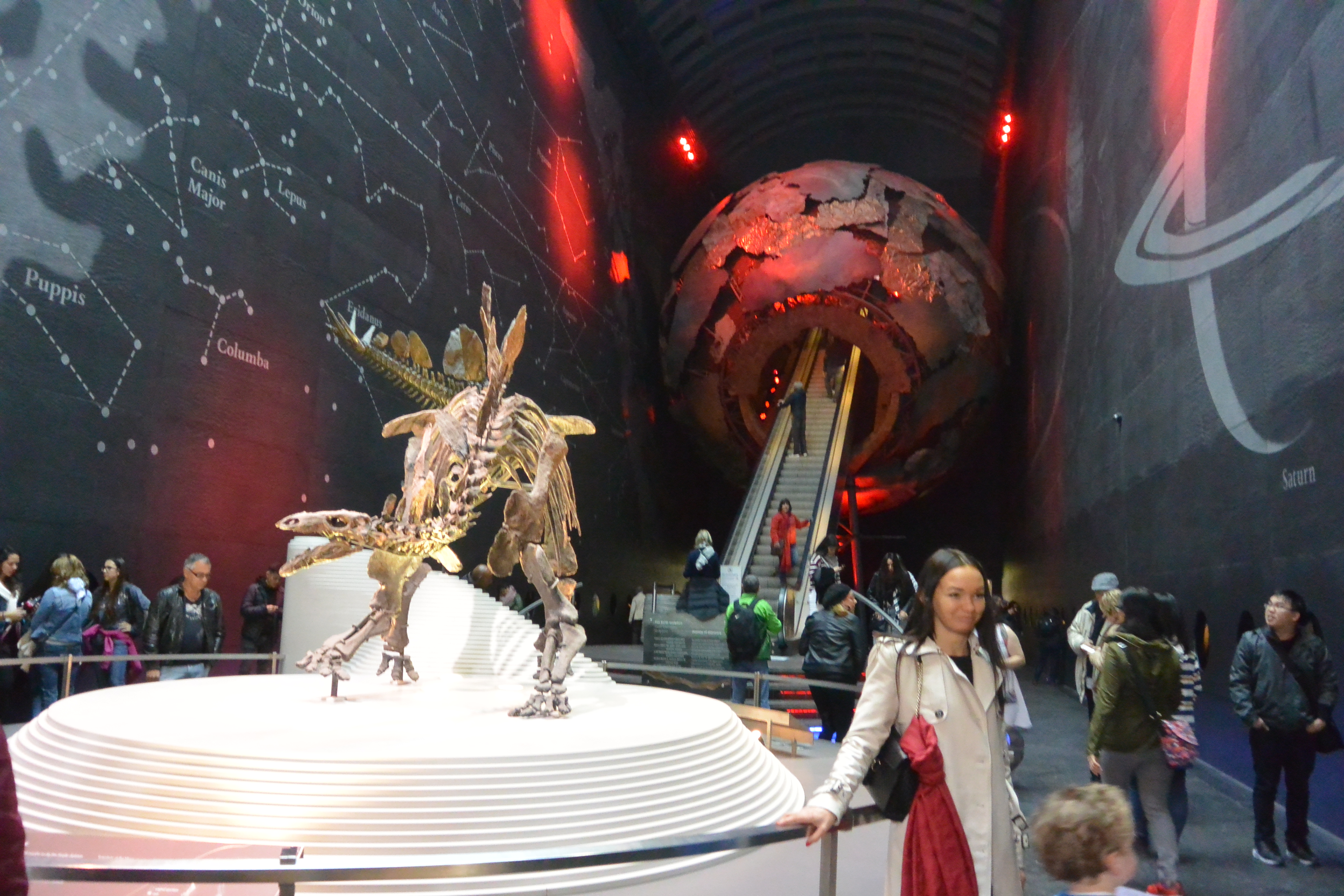Difference between revisions of "Natural History Museum"
From Londonhua WIKI
(→=) |
(→Prehistoric Sea Dinosaurs) |
||
| Line 37: | Line 37: | ||
Many believe the Tyrannosaurus Rex to be extinct, but today the greater population… still writing | Many believe the Tyrannosaurus Rex to be extinct, but today the greater population… still writing | ||
==== Prehistoric Sea Dinosaurs ==== | ==== Prehistoric Sea Dinosaurs ==== | ||
| − | + | still writing | |
<br><br> | <br><br> | ||
Revision as of 13:53, 11 May 2017
Natural History Museum
 | |
| Natural History Museum, Main Entrance | |
|---|---|
| National History Museum, London |
Overview
The Natural History Museum is a free museum open to the public and is dedicated to teaching people about how the natural world works. The museum's exhibits focus on the past, present, and future of the natural world and humanity through science and history. The museum has many temporary exhibits as well as permanent ones. It is also the workplace of many scientists who do research on Earth and life sciences.
Contents
- 1 Natural History Museum
- 2 Overview
- 3 Background
- 4 References
- 5 External Links
- 6 Image Gallery
- 7 Category tags
Background
The Natural History museum was opened in 1881 and is located in central London. It was officially known as the British Museum(Natural History) until 1992, even though it was fully separated from the British Museum in 1963.
Exhibits
The Natural History Museum in London has many permanent exhibits as well as some temporary exhibits. Some of the current and upcoming temporary exhibits are the exhibits featuring the wildlife photographer of the year and one dedicated to the blue whale. The following sections of this page are dedicated to the permanent exhibits of the museum.
Dinosaur Exhibit
The Natural History museum is home to a multitude of dinosaur fossils and information. The museum contains the first fossil ever found from a Tyrannosaurus rex and other interesting archaeological discoveries like the tail club of a Euoplocephalus and a complete Triceratops.
The exhibit also contains information on possible theories of how the dinosaurs became extinct including the popular theory that something from space hit the Earth and the impact slowly killed all of the dinosaurs.
Also included in the exhibit is information on various traits that dinosaurs developed over time and why certain species of dinosaurs evolved differently from each other.
Prehistoric creatures still around today
Today, many go to museums to see the remnants of the past, however still today one can see ancestors of these amazing creatures …. Still writing
Dinosaurs to pigeons
Many believe the Tyrannosaurus Rex to be extinct, but today the greater population… still writing
Prehistoric Sea Dinosaurs
still writing
Space Exhibit
The space exhibit reflects our current knowledge of how the universe works. It discusses planetary change, solar systems, and graphics on the future of our universe. The graphics help to give an accurate timeline of historical events to show the magnitude of the span of the universes' history. The events go as far back as 2,500 million years ago. It discusses climate change and what affects it.
Marine Invertebrates
The marine invertebrates exhibit houses many examples of marine organisms that do not have backbones. These organisms include crustaceans, cephalopods, corals. The most distinguishing feature in the exhibit is a life sized giant squid that hangs from the ceiling along the back wall.
Extinct Animals Exhibit
The Natural History Museum in Kensington, London is a magnificent museum. There were many fascinating exhibits in the museum. The first exhibit we went through were drawings of extinct and old animals. There were drawings of dodo birds and turtles, and a tutorial on how to use the printing press for artwork. A video showed a woman etching a sheet of metal with many lines, then covering the whole sheet of metal with a single color of paint. While the paint was still wet, a large piece of paper and a cloth covered the sheet of metal. Once it was covered, it would go through an old fashioned printing press with a hand crank. The finished product would be the piece of paper with painted lines transferred from the sheet of metal. While going through the printing press, the paint on the etched metal lines would transfer over to the piece of paper, creating a magnificent piece of artwork that could be reproduced many times.
The Human Mind
Located in the human body exhibit is an entire section on cognitive thinking. Cognitive thinking refers to mental activities and skills that are used to perform tasks such as learning, understanding, remembering reasoning and more. This exhibit explores the depth and limits of the human mind in performing these tasks. There seems to be a lot of informational displays but most of the content was communicated through interactive displays. Some of the actives included how to improve your ability to memorize a list, pretending to be an eyewitness to a crime and even trying to see how many pictures you can recognize from a group of thirty.
Minerals & The Vault
claimed
Human Evolution
claimed
Volcanoes and Earthquakes
Volcanoes and earthquakes have shaped the surface of the Earth for billions of years. These events are caused by the heat of the Earth's core, which moves the tectonic plates on the surface. Volcanoes and earthquakes bring death and destruction, but also produce minerals people depend on.This exhibit is located in the Red zone of the museum along with all the exhibits that focus on the past and evolution. By doing research and studying them, scientist are able to understand how they work and how to prevent casualties. The exhibit has interactive actives and information filled plaques about what causes earthquakes and volcanoes, places that were effected by volcanoes and earthquakes and preventive measures to stay safe in the event one of these may occur. There is a portion of the exhibit on Mount Vesuvius where there are casts of the victims from the eruption of AD 79. One activity was to experience the Great Hanshin earthquake of 1995 in Japan that claimed around 6,500 lives. This earthquake was a wake-up call to Japan and today their architecture is more suited for major earthquakes.
Krakatoa
Taken
Great Hanshin Earthquake
Taken
The Darwin Centre
 |
 |
The Darwin Centre is a relatively recent addition to the Natural History Museum, opening to the public in 2009. The Centre is built around a eight-story display area called the Cocoon, which houses laboratories for museum scientists, as well as 3.3 kilometers of display cabinets. The Centre holds seventeen million entomology specimens and three million botany specimens. The top three floors are gallery spaces, containing specimens brought back by Charles Darwin from the Beagle voyage. The Cocoon, measuring sixty meters long, twelve meters wide, three hundred millimeters thick, and covering three thousand five hundred square meters, is the single largest sprayed concrete curved structure in Europe [1].
References
1. (n.d.). Retrieved May 09, 2017, from http://www.nhm.ac.uk/
External Links
If appropriate, add an external links section
Image Gallery
If appropriate, add an image gallery
Category tags
- ↑ Williams, R. (2009, September 14). Darwin Centre Opens to the Public. Retrieved May 10, 2017.
